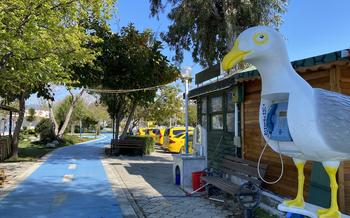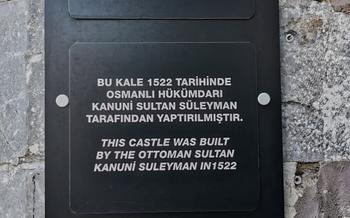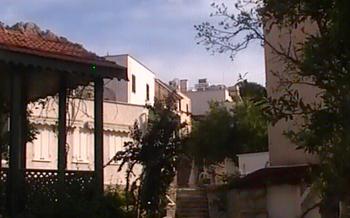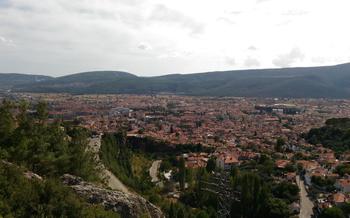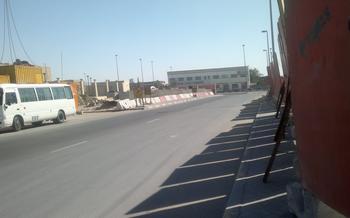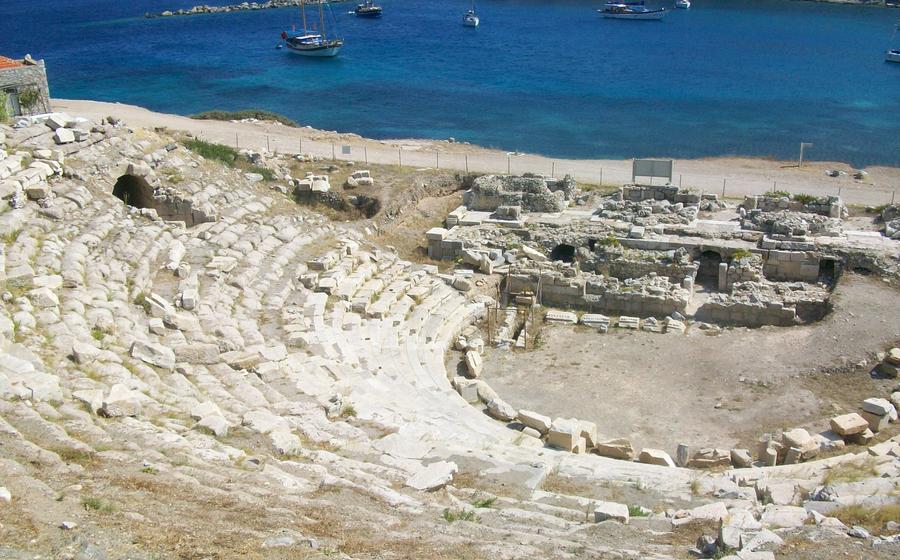
Ancient Theatre of Knidos
- Historical Significance
- Location and Accessibility
- Architectural Features
- Acoustics and Performances
- Restoration and Preservation
- Surrounding Area
- Entrance Fees and Hours
- Best Time to Visit
- Dress Code and Etiquette
- Photography and Videography
- Food and Drinks
- Accessibility for Disabled Visitors
- Guided Tours and Audio Guides
- Nearby Accommodation
- Insider Tip
Historical Significance
The ancient city of Knidos, located on the Datça peninsula in southwestern Turkey, was once a thriving center of culture, trade, and politics. The city's strategic location on a narrow isthmus connecting two seas made it a vital hub for maritime trade and a crossroads between the Aegean and Mediterranean civilizations.
The theatre of Knidos played a significant role in the city's cultural and social life. Built in the 4th century BC, the theatre was a venue for theatrical performances, musical concerts, and other public events. It was also used for political assemblies and civic gatherings, reflecting the vibrant democratic traditions of the ancient Greek city-states.
The theatre's architecture showcases Hellenistic influences, with its horseshoe-shaped seating arrangement, a spacious orchestra, and a well-preserved stage building. The stage is adorned with intricate carvings and sculptures depicting scenes from Greek mythology, offering a glimpse into the artistic and cultural heritage of the period.
Location and Accessibility
The Ancient Theatre of Knidos is nestled amidst the picturesque Datça peninsula, a beautiful region known for its stunning landscapes, crystal-clear waters, and rich history. To reach this architectural marvel, you can embark on a scenic drive from major cities like Marmaris, approximately 60 kilometers away, or Bodrum, located around 100 kilometers from the site.
For those arriving by air, the nearest airport is Milas-Bodrum Airport (BJV), situated roughly 120 kilometers from the theatre. From the airport, you can rent a car or hop on a bus to Datça, where local transportation options, such as taxis or minibuses, can take you to the theatre.
Once you arrive in Datça, follow the signs leading to the Ancient Theatre of Knidos. The theatre is conveniently located within walking distance from the town center, allowing you to explore other historical and cultural attractions in the area at your leisure.
Architectural Features
The Knidos Ancient Theatre boasts an impressive seating arrangement that could accommodate approximately 5,000 spectators. The seating area is divided into two main sections: the cavea, which comprises the tiers of seats, and the orchestra, a circular space at the center that served as the performance area. The cavea is further subdivided into several wedge-shaped sections called kerkides, separated by staircases.
The stage building, known as the skene, is a prominent feature of the theatre. Constructed of stone and brick, it features a two-tiered design with a series of niches and columns. The lower tier, known as the proskenion, served as a platform for actors to perform, while the upper tier, called the episkenion, functioned as a backdrop for the performances.
The theatre exhibits several unique architectural features that distinguish it from others in the region. One notable aspect is the curved shape of the cavea, which enhances the acoustics and ensures that all spectators have a clear view of the stage. Additionally, the theatre features a vaulted roof over the stage, which is a rare architectural element among ancient Greek theatres.
Acoustics and Performances
The Ancient Theatre of Knidos is renowned for its exceptional acoustics, which have remained intact despite the passage of time. The theatre's design, with its carefully curved seating rows and a large, semi-circular orchestra, ensures that sound carries clearly throughout the auditorium. This remarkable acoustic quality contributed to the immersive experience of ancient performances, allowing the actors' voices and musical instruments to reach every corner of the theatre.
In ancient times, the theatre hosted a variety of performances, including plays, concerts, and religious ceremonies. The stage building, with its intricate decorative elements and elaborate backdrop, served as a dynamic setting for theatrical productions. The theatre's acoustics played a crucial role in amplifying the voices of the actors, creating a powerful and engaging atmosphere for the audience.
Today, the theatre occasionally hosts modern-day performances and events, such as concerts, plays, and cultural festivals. These events provide an opportunity to experience the theatre's exceptional acoustics firsthand and appreciate the enduring legacy of ancient Greek performances.
Restoration and Preservation
The Ancient Theatre of Knidos has undergone extensive restoration efforts in recent years to preserve its historical significance and architectural beauty. These efforts have been meticulously carried out to maintain the authenticity of the theatre while ensuring its structural integrity. The challenges faced during the restoration process included addressing the effects of weathering, erosion, and natural disasters. Experts employed traditional techniques and materials to restore the theatre's stonework, seating tiers, and stage building. The restoration also involved landscaping and vegetation management to enhance the theatre's surroundings. By preserving and restoring this ancient gem, future generations can continue to appreciate its cultural heritage and architectural splendor.
Surrounding Area
The Datça peninsula, where the Ancient Theatre of Knidos is situated, is renowned for its breathtaking natural beauty. Visitors can immerse themselves in the picturesque landscapes characterized by crystal-clear turquoise waters, secluded coves, and lush pine forests. The peninsula is a haven for nature enthusiasts, offering a diverse range of outdoor activities.
History buffs will find themselves captivated by the numerous ancient sites scattered throughout the region, including the ruins of ancient cities, temples, and fortresses. These remnants of the past provide a glimpse into the rich cultural heritage of the area.
For those seeking adventure, the Datça peninsula offers a variety of exciting activities. Visitors can embark on invigorating hikes along scenic trails, discovering hidden coves and panoramic views. The crystal-clear waters invite snorkelers and divers to explore the vibrant underwater world, teeming with diverse marine life. Boat tours provide a unique perspective of the stunning coastline, allowing visitors to marvel at the natural beauty of the peninsula from a different vantage point.
Entrance Fees and Hours
Visiting the Ancient Theatre of Knidos is an affordable and accessible experience. The entrance fee is set at a reasonable rate, and discounted tickets are available for students, seniors, and groups. It is advisable to check the official website or contact the local tourism office for the most up-to-date information on pricing and discounts.
The theatre is open to the public daily, with varying hours depending on the season. During the summer months, the theatre remains open until sunset, allowing visitors to enjoy breathtaking views of the surrounding landscape as the sun dips below the horizon. In the winter months, the hours are shorter, so it is advisable to plan your visit accordingly.
Special events and guided tours may require advance booking, especially during peak tourist season. These events often provide a more in-depth look into the history and significance of the theatre, making them a worthwhile experience for those seeking a deeper understanding of this ancient site.
Best Time to Visit
The best time to visit the Ancient Theatre of Knidos is during the shoulder seasons, spring (April-May) and autumn (September-October), when the weather is pleasant and the crowds are smaller. During these months, visitors can enjoy a more relaxed and intimate experience, without having to navigate through large groups of tourists.
The summer months (June-August) can be hot and crowded, especially during the peak tourist season in July and August. While the weather is ideal for swimming and sunbathing, it can be uncomfortable to explore the ancient theatre under the scorching sun.
Winter (November-March) brings cooler temperatures and fewer visitors, but some parts of the theatre may be closed or inaccessible due to weather conditions. However, if you're looking for a peaceful and solitary experience, this can be a good time to visit.
If you're planning to visit during the peak season, it's advisable to arrive early in the morning or late in the afternoon to avoid the midday heat and crowds. You should also consider booking your tickets in advance, especially for popular events or guided tours.
Dress Code and Etiquette
When visiting the Ancient Theatre of Knidos, it is important to dress respectfully, considering the historical significance of the site. While there is no strict dress code, modest attire is recommended. Avoid wearing shorts, tank tops, or clothing with offensive slogans or images. Remember that the theatre is an ancient monument, and dressing appropriately shows respect for the site and its history.
It is also important to be mindful of your behavior while visiting the theatre. Be respectful of other visitors and avoid making excessive noise or causing disturbances. Refrain from climbing on the ancient structures or touching the ruins, as this can damage the fragile remains. By following these simple guidelines, you can help preserve this ancient treasure for future generations to enjoy.
Photography and Videography
Photography and videography are allowed inside the Ancient Theatre of Knidos, but visitors are expected to be respectful of the historical significance of the site. Flash photography and tripods are not permitted, as they can damage the ancient stonework. Visitors should also avoid taking photos or videos of other visitors without their permission.
The best spots for capturing memorable shots of the theatre include the upper rows of seating, which offer panoramic views of the stage and the surrounding landscape. The theatre's stage building is also a popular spot for photos, as it is intricately decorated with reliefs and sculptures. Visitors can also take photos of the theatre's exterior, which is surrounded by lush greenery and offers stunning views of the Aegean Sea.
Food and Drinks
When visiting the Ancient Theatre of Knidos, you won't find any food or beverage vendors within the premises. However, the nearby town of Datça offers a range of dining options to satisfy your cravings. From traditional Turkish cuisine to international fare, there's something for every palate.
For a taste of local flavors, head to one of the many restaurants or cafés lining the charming streets of Datça. Indulge in dishes like freshly caught seafood, succulent kebabs, or the famous Turkish delight, a sweet treat made with nuts, sugar, and rosewater.
If you prefer a picnic-style experience, consider packing your own snacks and drinks to enjoy in the serene surroundings of the theatre. Find a shady spot under the ancient olive trees and savor your meal while immersing yourself in the beauty of the surroundings. Just remember to dispose of your trash responsibly to preserve the pristine environment.
Accessibility for Disabled Visitors
The Ancient Theatre of Knidos is committed to ensuring that all visitors, including those with disabilities, have a safe and enjoyable experience. The theatre features several accessibility features to accommodate visitors with various needs. Wheelchair users and visitors with limited mobility can easily access the theatre through designated ramps and elevators. Once inside, there are reserved seating areas with unobstructed views of the stage. Additionally, visitors with disabilities can request assistance from the theatre staff, who are trained to provide support and ensure a smooth visit. The theatre's inclusive approach allows everyone to immerse themselves in the history and beauty of this ancient site.
Guided Tours and Audio Guides
The Ancient Theatre of Knidos offers guided tours for visitors who want to delve deeper into its history and significance. These tours are led by knowledgeable guides who provide insights into the theatre's construction, performances, and cultural importance. Visitors can learn about the theatre's acoustics, architectural features, and its role in the ancient city of Knidos.
For those who prefer a self-guided experience, audio guides are available in multiple languages. These audio guides offer a narrated tour of the theatre, allowing visitors to explore at their own pace and learn about the site's history and significance. The audio guides provide detailed information about the theatre's construction, performances, and its role in the ancient city of Knidos.
Whether you choose to take a guided tour or use an audio guide, exploring the Ancient Theatre of Knidos with the help of expert insights will enhance your understanding and appreciation of this remarkable historical site.
Nearby Accommodation
For a truly memorable experience, consider staying in one of the charming guesthouses or boutique hotels located within walking distance of the theatre. These accommodations often offer stunning views of the surrounding landscape and provide a unique opportunity to immerse yourself in the history and culture of the region. For a more luxurious stay, opt for one of the resorts or villas that dot the Datça peninsula, offering amenities such as private pools, spas, and gourmet restaurants.
To ensure a hassle-free stay, especially during the peak tourist season, it is advisable to book your accommodation in advance. Many hotels and guesthouses offer online booking options, allowing you to secure your preferred room with just a few clicks. Whether you prefer a cozy bed and breakfast, a family-friendly resort, or a secluded villa, you are sure to find the perfect accommodation to complement your visit to the Ancient Theatre of Knidos.
Insider Tip
As I stood in the ancient theatre of Knidos, gazing out at the sparkling Aegean Sea, I couldn't help but feel a sense of awe and wonder. The theatre, with its perfectly preserved seating tiers and impressive stage building, seemed to transport me back in time to a world of ancient Greek dramas and spectacles.
My insider tip for visitors to the theatre is to time your visit for sunset. As the golden hues of the setting sun bathed the theatre in a warm glow, the atmosphere became truly magical. The combination of the stunning natural scenery and the historical significance of the site created an unforgettable experience that left me mesmerized.
So, if you're planning a trip to Datça, be sure to add the ancient theatre of Knidos to your itinerary. And don't miss the chance to experience the theatre at sunset for a truly unforgettable moment.
